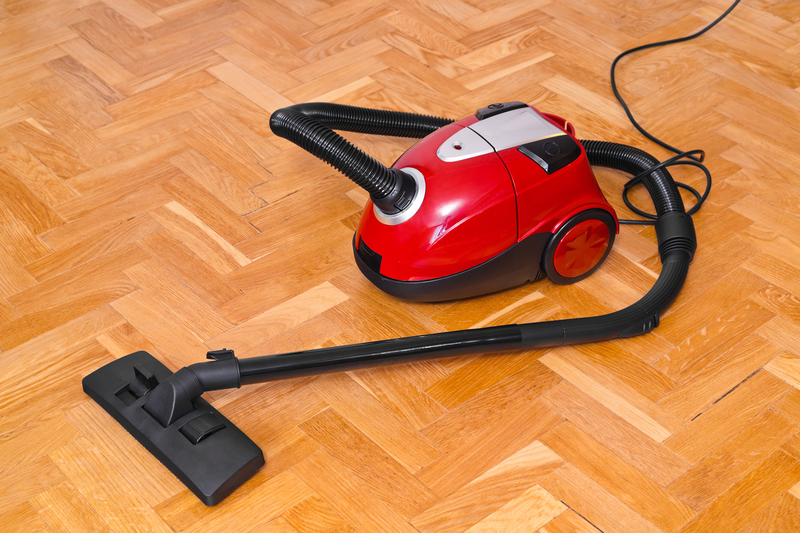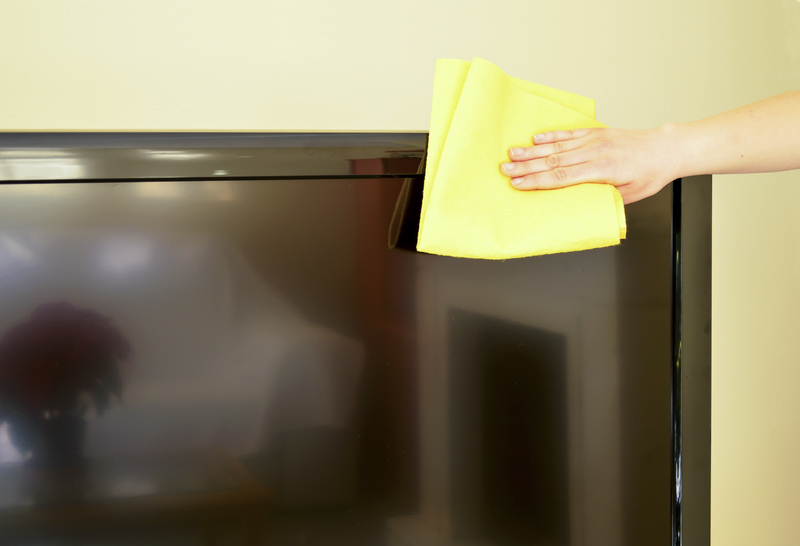Expert Tips for Removing Mould from Window Sills
Posted on 08/06/2025
Expert Tips for Removing Mould from Window Sills
Experiencing unsightly dark spots or musty odors around your window frames? Mould on window sills is a common problem in households of all types, especially in areas with high humidity or poor ventilation. Not only does mould damage your home's aesthetics, but it can also pose health risks--particularly to those with allergies or respiratory issues. If you're searching for effective ways to get rid of mould and keep it from returning, you've come to the right place. In this comprehensive guide, we'll share expert, Google-friendly tips on removing mould from window sills safely, thoroughly, and efficiently.
Why Does Mould Grow on Window Sills?
Before diving into mould removal techniques for window sills, it's essential to understand what causes this persistent issue. Mould is a type of fungus that thrives in damp, poorly ventilated environments. Window sills are particularly vulnerable because:
- Condensation: Water droplets gather on window panes during cold weather, often dripping down onto the sills.
- Poor Insulation: Gaps or poorly insulated windows can let in moisture.
- Lack of Airflow: Limited ventilation in rooms such as bathrooms or kitchens can trap moisture, creating ideal conditions for mould growth.
Understanding why mould appears is the first step towards effective treatment and prevention.

The Importance of Removing Mould from Your Window Sills
Mould isn't just an eyesore; it's a potential health hazard. Exposure to mould spores can cause respiratory problems, allergies, coughs, and eye or skin irritation. Certain types, such as black mould (Stachybotrys chartarum), are particularly notorious for impacting health. Moreover, mould can weaken the materials of your window sills, leading to decay, paint failure, and expensive repairs.
Prompt and proper removal of mould from window sills improves your living environment, safeguards your family's health, and protects your property investment.
How to Identify Mould on Window Sills
Mould on window sills may not always be obvious. Here are some signs to watch for:
- Dark spots or fuzzy growth (black, green, grey, white, or yellowish patches)
- Musty or damp odors
- Peeling, bubbling, or cracked paint
- Staining on wood, vinyl, or painted surfaces
*Note: Not all discolored spots are mould--sometimes, it's just dirt or mildew. If uncertain, treat the area as a precaution.*
Preparing for Safe Mould Removal
Safety first! Mould spores can be harmful if inhaled or touched. Gather these supplies before you begin cleaning mould from window sills:
- Protective gloves (rubber or latex)
- Safety goggles
- Face mask or respirator (N95 recommended)
- Old clothes you can launder or discard
- Plastic sheeting or drop cloth (to protect nearby surfaces)
*Open a window or use a fan to ensure good ventilation in the room while cleaning.*
Step-by-Step Guide: Removing Mould from Window Sills
1. Assess the Severity of Mould Growth
For small patches (less than 1 square meter), DIY treatment should suffice. If mould covers a large area or has penetrated deep into the structure, contact professional mould remediation services.
2. Gather Cleaning Materials
- Detergent or soap
- White vinegar (natural mould killer)
- Baking soda
- 3% hydrogen peroxide solution
- Spray bottle
- Soft brush or old toothbrush
- Microfiber cloths or paper towels
- Bucket
Skip the bleach on wooden window sills--it can damage finishes and isn't fully effective on porous surfaces.
3. Remove Loose Mould Spores
Gently wipe the area with a damp cloth to pick up loose material and minimize airborne spores. Discard the cloth after use.
4. Apply a Mould-Killing Solution
- White Vinegar Method: Pour undiluted vinegar into a spray bottle, generously mist the affected area, and let it soak for at least an hour. Vinegar is proven to kill over 80% of mould species.
- Hydrogen Peroxide Method: Spray a 3% solution onto the surface, allow it to bubble for 10-15 minutes, then wipe clean.
- Baking Soda Paste: Make a paste with baking soda and water, scrub gently with a brush, then rinse off.
For extra stubborn mould, combine vinegar and baking soda--they work together for a powerful cleaning punch.
5. Scrub and Rinse Thoroughly
Use an old toothbrush or soft-bristled brush to scrub away mould. Don't use abrasive pads on delicate finishes! Wipe the area with a clean, damp cloth to remove any residue.
6. Dry Completely
Mould loves moisture, so use a towel or dry cloth to absorb all remaining water. Consider using a fan or dehumidifier to speed up the process.
7. Repeat if Necessary
If traces of mould remain, repeat the previous steps until the area is spotless. Persistent stains may require sanding and repainting, especially on wooden window sills.
Natural vs. Chemical Solutions for Mould Removal
Many homeowners prefer natural remedies such as vinegar, hydrogen peroxide, tea tree oil, or baking soda for removing mould. These options are effective for killing mould on window sills and are less damaging to surfaces and the environment.
Chemical solutions (such as commercial mould removers) can be more potent, but always follow manufacturer instructions and check if the product is suitable for your window sill's material.
- Pros of natural solutions: Eco-friendly, affordable, safe for pets and kids.
- Cons: May require more applications for heavy infestations.
How to Prevent Mould from Returning to Window Sills
Successful window sill mould removal goes hand-in-hand with smart prevention. Here's how to keep your window sills mould-free for good:
- Improve ventilation: Open windows regularly, use extractor fans, and keep air moving around your home--especially in humid rooms.
- Use a dehumidifier: This reduces overall indoor moisture, making conditions less hospitable to mould.
- Wipe away condensation daily: Keep a cloth handy to quickly remove water buildup on and around windows.
- Fix leaks promptly: Repair cracked window panes, faulty seals, or leaks in the frame.
- Check insulation: Install double glazing or improve insulation to prevent temperature differences that cause condensation.
- Clean window sills regularly: Don't let dust and organic debris (which can feed mould) build up.
What to Avoid During Window Sill Mould Removal
- Don't dry scrape or sand mouldy surfaces: This can release spores into the air and spread mould to other areas.
- Avoid mixing cleaning solutions: Especially ammonia and bleach--this can create toxic gases.
- Don't paint over mould: Painting without proper mould remediation traps spores and may make the problem worse.
- Never touch mould with bare hands: Always use protection to avoid skin irritation or allergic reactions.
When to Call a Professional for Severe Mould Problems
While DIY mould removal works for minor surface growth, some situations require expert remediation:
- Mould covers a large area (>1 square meter)
- Mould returns rapidly after cleaning
- You notice structural damage or wood rot
- You or a family member experience unexplained health issues or allergies
- There is evidence of hidden mould within walls or under window frames
Professional mould remediation services use specialized equipment and protocols to safely eradicate mould and prevent recurrence.
Frequently Asked Questions about Removing Mould from Window Sills
Is vinegar or bleach better for cleaning mould from window sills?
Vinegar is generally more effective for removing mould on porous surfaces like wood. Bleach can miss mould that penetrates beneath the surface, and it may damage window sills, especially if they are painted or wooden.
How often should I check my window sills for mould?
Inspect window sills at least once a month, or more frequently during wet or cold seasons when condensation is likely.
Can I prevent mould by painting my window sills?
You can use mould-resistant paints, but this is only effective after thoroughly removing all traces of existing mould. Paint alone won't prevent regrowth if moisture problems persist.
Is mould on window sills dangerous for pets?
Yes. Pets can also be sensitive to mould spores and may experience coughing, sneezing, or skin irritation.

Summary: The Key to Mould-Free Window Sills
Tackling mould growth on window sills doesn't have to be overwhelming. With the right knowledge, tools, and safety precautions, you can remove mould from window sills effectively and restore your home's beauty and healthy air quality. Always address the root causes--namely, excess moisture and poor ventilation--to ensure long-lasting results. With regular maintenance and these expert mould removal tips, your windows can remain clean, bright, and mould-free for years to come.
If you've followed these steps and mould still returns, don't hesitate to consult a professional--your family's health and home are worth it.
Ready to Say Goodbye to Mould?
Remember, removing mould from window sills is not just about cleaning--it's about creating a healthy, comfortable, and beautiful home. For more expert advice on home maintenance and mould prevention, keep exploring our site!





